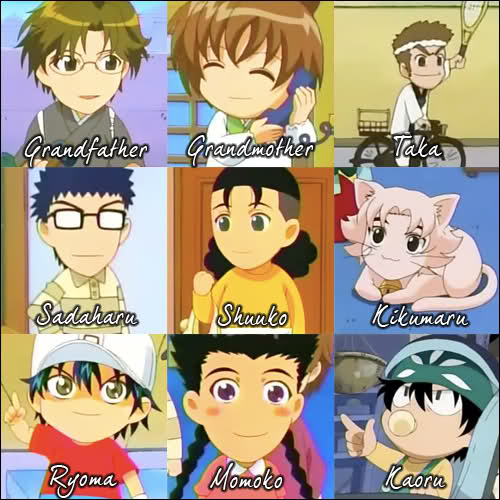One of the things that I found interesting was that words written in katakana can make use of katakana for more than one reason. For example, we talked in class about how katakana can be used for emphasis or for loan words, and combining these two usages can have a powerful effect in Japanese. Take the word ファッション: obviously, the word comes from the English word “fashion.” It is therefore a loan word, and that is one of the reasons it is written in katakana. But if we take a look at the picture where this loan word was found, we can see that using katakana is also a good way to advertise fashion. Katakana’s visual aesthetic is sharper and edgier than either hiragana or kanji, and so it fits well with the idea of fashion itself, emphasizing the idea of fashion and creating an impression of fashion being “cutting edge,” simply through the way the word looks written in katakana. Fashion is different from just wearing everyday clothes—the fashion industry is about pushing the frontiers of aesthetics, being avant-garde and setting new trends, and the visual look of katakana, an alphabet which stands apart from everyday hiragana and kanji, reflects that. In short, katakana is useful here because it can combine the familiar with the unfamiliar. If the word had simply been written in English letters, it would be entirely foreign, and while that might have exotic appeal, it doesn’t lend itself to the idea of mass culture. Katakana, on the other hand, can express both exoticism and mainstream appeal simultaneously.
Here is the picture:

Another use of katakana that fascinates me is the way that katakana can define a culture or people. We see some hints of this in the idea of using katakana for foreign words, thereby highlighting their exoticism. But the most extreme case of this is the way the Ainu people of Japan use katakana as their writing system (Wikipedia “Special Katakana for the Ainu Language”). The Ainu are an indigenous group of people in Japan who have historically been considered ethnically separate from the Japanese, and their language is not related to Japanese. Originally, they did not have their own writing system, because the Ainu practiced oral traditions (Wikipedia “Ainu people”). Their adoption of katakana as their writing system is therefore symbolic of their place in Japanese society. They have adopted a Japanese writing system, showing how, as their numbers dwindle (official government estimates say that there are only 25,000 Ainu left today, and the Ainu language is in danger of dying out (Wikipedia “Ainu people”)) the Ainu are becoming more integrated into Japanese society, or at least less able to resist the influence of Japanese culture on their own. And yet, the choice to adopt katakana rather than hiragana or kanji may not be just a practical choice, although it is true that katakana, of the three writing systems used by the Japanese, is the best able to accommodate the foreign sounds of the Ainu language. Because katakana is associated with foreign words, using katakana as one’s only writing system sends a message: the Ainu are not Japanese. This message is at once one of solidarity and of isolation. On the one hand, it defines the Ainu as its own people with their own culture, proudly refusing to be fully integrated into ethnic Japanese society after more than a century of domination and forced assimilation by the Japanese government (Wikipedia “Ainu people”). On the other hand, katakana acts as a clear, visual barrier setting the Ainu apart from the rest of Japan, making them, if not unequal to then at least very different from the ethnic Japanese, regardless of whether they want to be considered different or not. Thus, katakana can help to define an entire culture or people and their place in Japan as “other.”
Note 1: The assignment asked us to explain the differences in the explanation of katakana in various Japanese language textbooks. However, I have chosen not to do so because I find that the explanations did not really vary.
Note 2: Some of the people who commented on my Katakana Analysis draft asked why it would be that the Ainu use katakana and not romaji, which they felt would be more able to express the sounds of the Ainu language. I have two replies to this: firstly, the Ainu language is indeed sometimes written using Latin script (Ethnologue “Ainu”). More importantly, we need to distinguish between the use of latin script and the use of romaji. Western languages and their alphabets may contain sounds that are closer to the Ainu language than Japanese sounds are, and can therefore be useful when trying to put the Ainu language down in writing. However, this is not the same as using romaji, because romaji consists of using a Western-style alphabet to express Japanese language sounds. It is therefore just as restrictive sound-wise as katakana, because it is simply a transliteration of Japanese sounds into English letters, used today to help Westerners understand Japanese pronunciation. I believe that katakana is therefore more practical than romaji for writing the Ainu language, because we go from Ainu sounds to Japanese approximations, whereas romaji would be an English approximation of the Japanese approximation of the sounds of the Ainu language.
Sources:
1) Ethnologue: entry for the Ainu language (http://www.ethnologue.com/show_language.asp?code=ain)
3) Wikipedia article: Ainu people (http://en.wikipedia.org/wiki/Ainu_people)


